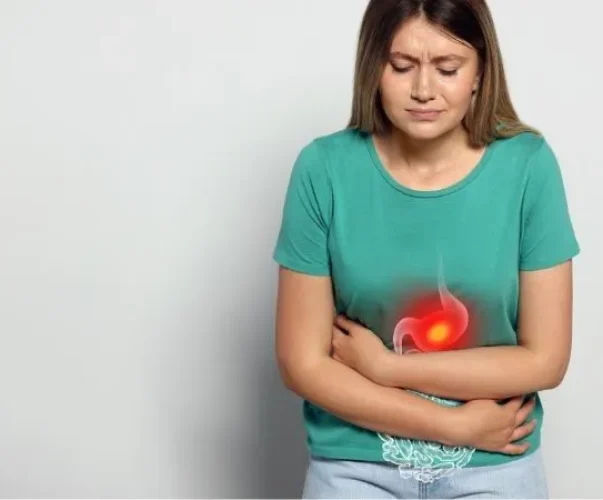Gastroenterology & Hepatology
Gastroenterology & hepatology is the branch specialized in preventing, diagnosing and treating digestive tract and liver disorders. It mainly include conditions involving the esophagus, stomach, small intestine , colon along with accessory organs like liver , bile ducts , gallbladder & pancreas.
Area of Expertise
1. Interventional endoscopy and colonoscopy: procedures like banding (variceal ligation), stricture dilatation, polypectomy, sclerotherapy, glue injection, foreign body removal, hemo-clip placement, APC, PEG tube placement, EMR, SEMS placement, double-balloon enteroscopy, and capsule endoscopy
2. Therapeutic ERCP and EUS
3. Disorders of Gut-Brain Interactions (DGBI): irreversible bowel syndrome, functional constipation, and functional dyspepsia
4. Esophago-gastric diseases (GERD, peptic ulcers, gastroritis,Gastritis H. pylori infection, achalasia cardia)
5. Pancreatobiliary disorders: acute and chronic pancreatitis; gall bladder stones; pancreatic and gall bladder cancer
6. Inflammatory bowel diseases (ulcerative colitis, Crohn’s disease)
7. GI neoplastic disorders (esophageal, stomach,stomach and colonic cancers)
8. Preventive gastroenterology: genetic testing, family screening for cancer, and colon polyps
9. Bariatric procedures: intra-gastric balloon placement
10. Liver diseases: fatty liver, cirrhosis,cirrhosis hepatitis B, hepatitis C, hepatocellular carcinoma, liver diseases unique to pregnancy, Drug-induced liver injury

Gastroenterology & Hepatology
GERD and peptic ulcer disease
It is one of the most common GI symptoms. Heartburn occurs due to acid reflux in the esophagus. Not to worry, as the symptoms can worsen.
Peptic ulcers occur due to H. pylori infection and drugs.
Liver, gallbladder, and pancreatic diseases:
The gallbladder is an organ that stores and releases bile to help with digestion, while the pancreas is a small organ that makes digestive juices called enzymes, which break down fat, carbohydrates, and proteins. The two ducts, one that carries bile from the gallbladder, the bile duct, and digestive juices from the other, the pancreatic duct, join together, forming the common bile duct (CBD), and release the fluids into the intestine.
At times, the gallstones that are formed in the gallbladder move into the pancreatic duct, CBD, or the intestinal opening, thereby preventing the juices from being released to the intestine and backtracking to the pancreas. thereby causing symptoms like
- severe pain, often in the upper part of the abdomen.
- Pain that radiates to the shoulder and chest
- Nausea and vomiting
- Loss of appetite
- yellowing of the skin or eyes.
Resulting in gallstones, stones in CBD, or acute pancreatitis.
Other factors causing inflammation of the pancreas include:
- Alcohol-induced
- High levels of triglycerides
- Trauma-induced,etc.
Jaundice: yellowish discoloration of the outer aspects of the eyes, signifying either breakdown of red blood cells, liver dysfunction like hepatitis, or obstruction in the bile duct system.
Fatty liver is a condition caused by the buildup of fat in the liver. The risk factors for this condition are alcohol, resulting in alcoholic fatty liver disease; obesity; and type 2 diabetes, resulting in non-alcoholic fatty liver disease. It is generally a benign condition, but in a few patients, it can progress to jaundice and liver failure, called cirrhosis.
Liver cancers like hepatocellular carcinoma, cholangiocarcinoma, etc.
Inflammatory bowel disease (IBD)
It includes Crohn’s disease and ulcerative colitis.
Crohn’s disease can affect any part of the GI tract (from mouth to anus).
Inflamed areas appear in patches next to healthy areas.
Inflammation affects all the layers of the bowel wall.
Ulcerative colitis is a disease that starts in the rectum and can involve the entire colon. Inflamed areas are continuous (not patchy). Inflammation only affects the inner lining of the bowel wall.
In those diseases that do not respond to medications, various interventional therapeutic modalities exist for precise targeting of the disease, like:
- Esophageal variceal banding
- Foreign body removal by endoscopy
- ERCP for bile duct (CBD) stone retrieval
- Lithotripsies
- RF ablation of a few cancers
- POEM for motility disorder, achalasia
- Stricture release by endoscopy
- Haemorrhoids: banding
- Colonic tumor-ststenting
Meet Our Doctor

Dr. Srinivasa Reddy
Accomplished Neurosurgeon
